The Liturgical Yr: A Journey By Time with the Catholic Church
Associated Articles: The Liturgical Yr: A Journey By Time with the Catholic Church
Introduction
On this auspicious event, we’re delighted to delve into the intriguing subject associated to The Liturgical Yr: A Journey By Time with the Catholic Church. Let’s weave attention-grabbing data and provide recent views to the readers.
Desk of Content material
The Liturgical Yr: A Journey By Time with the Catholic Church
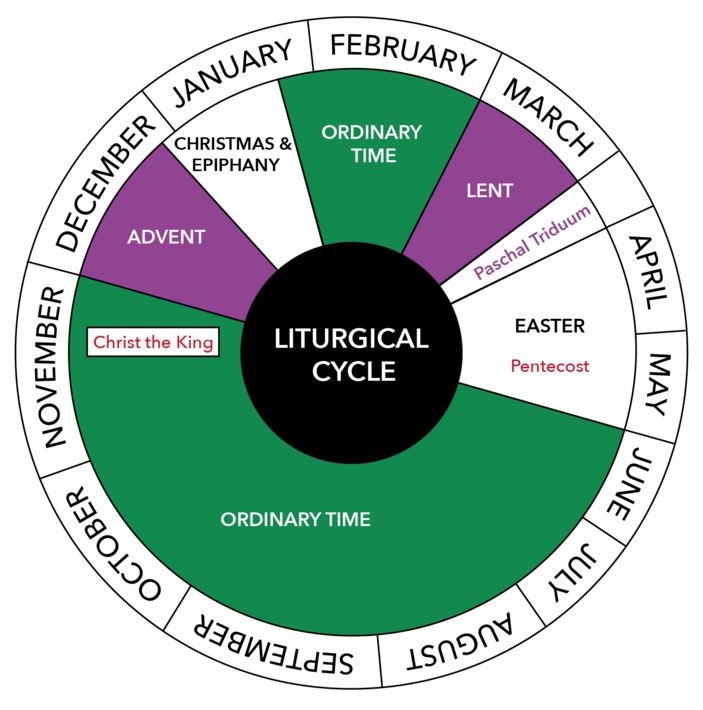
The Catholic Church’s liturgical calendar is greater than a easy schedule of companies; it is a vibrant tapestry woven from scripture, custom, and historical past, guiding believers on a yearly non secular pilgrimage. This meticulously structured calendar shapes the prayers, readings, and general environment of Catholic worship, providing a wealthy and profound engagement with the life, demise, and resurrection of Jesus Christ, in addition to the lives of the saints and the continued lifetime of the Church. Understanding its construction and significance unveils a deeper appreciation for the Catholic religion’s rhythm and richness.
The liturgical 12 months is cyclical, mirroring the cyclical nature of life, demise, and resurrection. It begins with Introduction, a season of expectant ready for the approaching of Christ, and culminates within the celebration of the solemnity of Christ the King, reflecting the reign of Christ over all creation. This general construction is punctuated by quite a few feasts, memorials, and solemnities, every with its personal distinctive character and theological significance.
The Seasons of the Liturgical Yr:
The liturgical 12 months is broadly divided into a number of distinct seasons, every possessing a selected theological emphasis and shaping the character of the liturgical celebrations inside it:
-
Introduction (4 Sundays earlier than Christmas): This season is a time of preparation and anticipation for the approaching of Christ. The main target is twofold: the historic coming of Jesus in Bethlehem and the eschatological coming on the finish of time. The readings emphasize themes of hope, repentance, and vigilance. The liturgical colours are purple (representing penance) and rose (on Gaudete Sunday – the Third Sunday of Introduction – signifying pleasure).
-
Christmastide (Christmas to Epiphany): This joyous season celebrates the beginning of Jesus Christ. The main target is on the incarnation – God turning into man. The liturgical colour is white, symbolizing purity and pleasure. The octave of Christmas (eight days following Christmas Day) is a interval of intense celebration.
-
Extraordinary Time (after Epiphany and after Epiphany): That is the longest season of the liturgical 12 months, divided into two elements: one following Epiphany and one other following Pentecost. Extraordinary Time just isn’t "abnormal" within the sense of being unimportant; reasonably, it gives a time for reflection on the teachings and lifetime of Jesus, specializing in the Gospels and the abnormal lifetime of the Church. The liturgical colour is inexperienced, representing development and hope.
-
Lent (40 days earlier than Easter, excluding Sundays): This penitential season prepares the trustworthy for the celebration of Easter. It commemorates the 40 days Jesus spent fasting within the desert. The emphasis is on repentance, prayer, and almsgiving. The liturgical colour is purple, representing penance. Ash Wednesday marks the start of Lent, and the readings concentrate on themes of conversion and non secular renewal.
-
Holy Week: Probably the most sacred week of the liturgical 12 months, culminating in Easter. This week recounts the occasions main as much as Jesus’ crucifixion and resurrection. Palm Sunday commemorates Jesus’ triumphal entry into Jerusalem. Holy Thursday celebrates the Final Supper. Good Friday commemorates the crucifixion of Jesus. Holy Saturday is a day of ready and prayer, anticipating the resurrection.
-
Easter Triduum (Holy Thursday, Good Friday, Holy Saturday): This three-day interval varieties the center of the liturgical 12 months, celebrating the Paschal Thriller – the fervour, demise, and resurrection of Jesus Christ. It’s a time of intense prayer and reflection.
-
Eastertide (Easter to Pentecost): This joyous season celebrates the resurrection of Jesus Christ and the triumph of life over demise. The liturgical colour is white, symbolizing pleasure and victory. The octave of Easter is a interval of intense celebration. Ascension Thursday celebrates Jesus’ ascension into heaven.
-
Pentecost Season (Pentecost to the start of Introduction): This season celebrates the descent of the Holy Spirit upon the apostles and the beginning of the Church. The liturgical colour is pink, symbolizing the fireplace of the Holy Spirit. The readings concentrate on the mission of the Church and the items of the Holy Spirit.
The Construction of the Liturgical Calendar:
The liturgical calendar is a fancy system, incorporating numerous ranks of celebrations:
-
Solemnity: The very best rating celebration, normally commemorating Christ or the Blessed Virgin Mary. These are normally compulsory days of observance.
-
Feast: A major celebration, commemorating a saint or a serious occasion within the historical past of salvation.
-
Memorial: A celebration commemorating a saint or an occasion, much less essential than a feast.
-
Non-compulsory Memorial: A commemoration that could be noticed relying on the liturgical context.
-
Weekday: Extraordinary days of the 12 months, with their very own particular liturgical readings and prayers.
The Significance of the Liturgical Calendar:
The liturgical calendar just isn’t merely a schedule; it is a profound pedagogical device, shaping the religion formation of Catholics. It fosters:
-
Religious Formation: The cyclical nature of the liturgical 12 months permits for a deepening of religion via common participation within the liturgical celebrations. The totally different seasons provide alternatives for reflection on totally different points of the Christian life.
-
Communion with the Saints: The calendar consists of the celebrations of quite a few saints, inspiring believers and providing examples of Christian residing. It connects the trustworthy to the broader communion of saints, each residing and deceased.
-
Understanding of Sacred Scripture: The liturgical readings all year long present a complete engagement with the Bible, providing a scientific exploration of its themes and messages.
-
Neighborhood Constructing: Participation within the liturgical celebrations strengthens the bonds of neighborhood among the many trustworthy. It fosters a way of belonging and shared id.
-
Theology in Motion: The liturgical 12 months unfolds the central mysteries of the religion – the Incarnation, Ardour, Loss of life, and Resurrection – in a tangible and experiential means. It permits for a deeper understanding of the core tenets of Christianity.
Modifications and Variations:
The liturgical calendar has undergone revisions all through historical past, most notably with the reforms of the Second Vatican Council (1962-1965). These reforms aimed to boost the understanding and participation of the laity, emphasizing the vernacular language and lively participation within the liturgy. The present calendar displays these adjustments, searching for a steadiness between custom and up to date sensibilities.
Conclusion:
The Catholic liturgical calendar is a wealthy and sophisticated system that provides a profound journey via the Christian religion. Its cyclical nature, numerous celebrations, and thoroughly chosen readings present a framework for non secular development, communal worship, and a deeper understanding of the mysteries of religion. By participating with the liturgical 12 months, Catholics are invited to take part extra absolutely within the lifetime of the Church and to expertise the transformative energy of the Gospel message all year long. It’s a residing testomony to the enduring relevance of the Christian religion and its capability to nourish and maintain believers all through their lives.
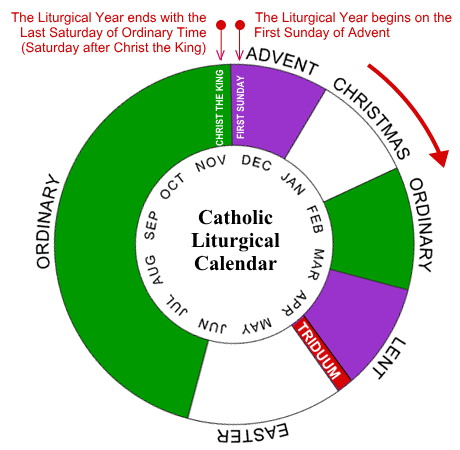
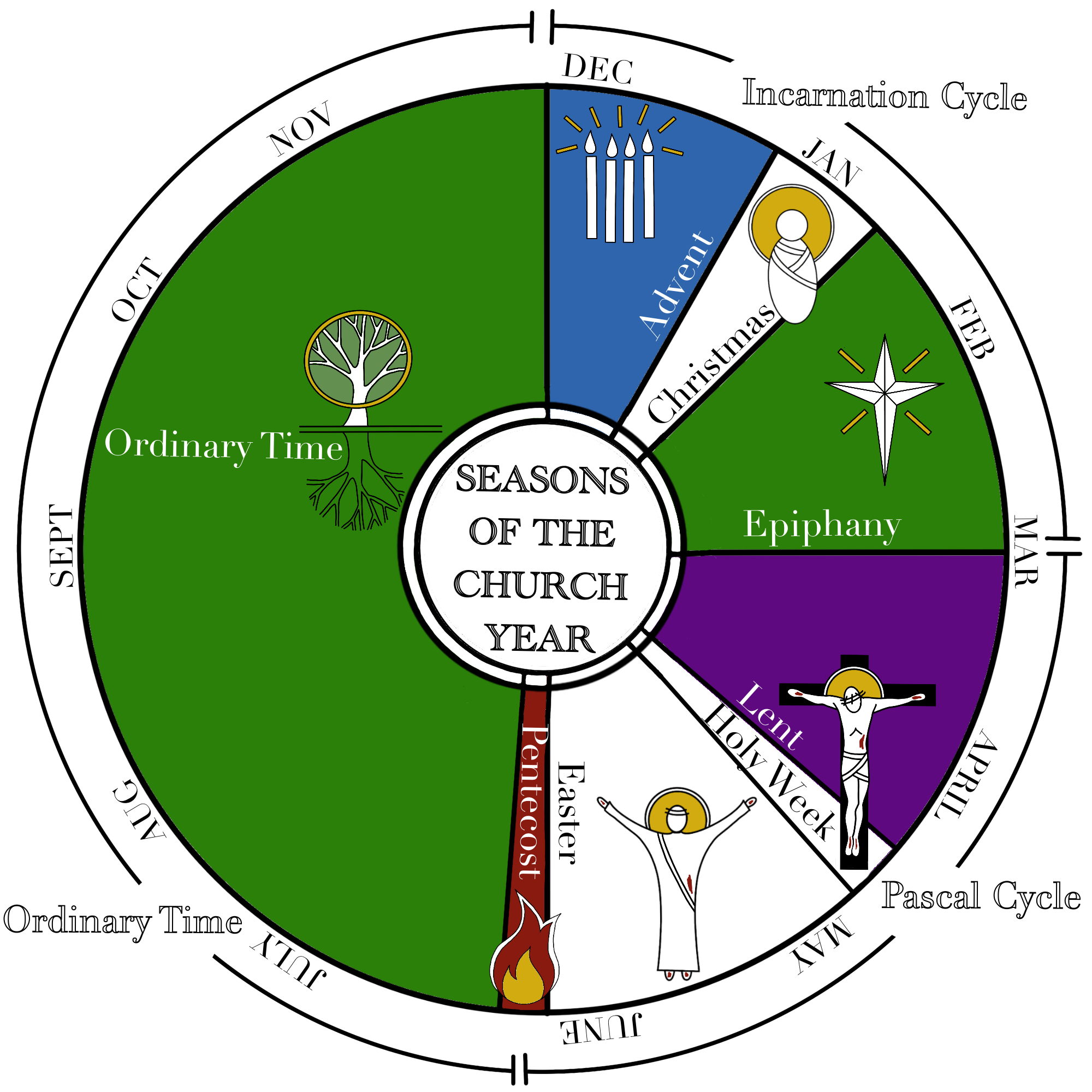
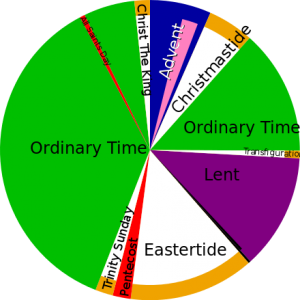



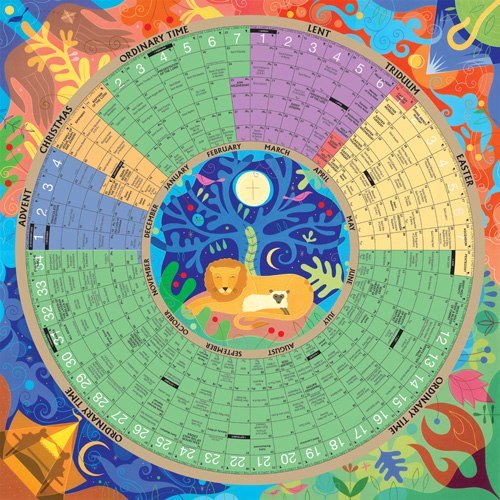
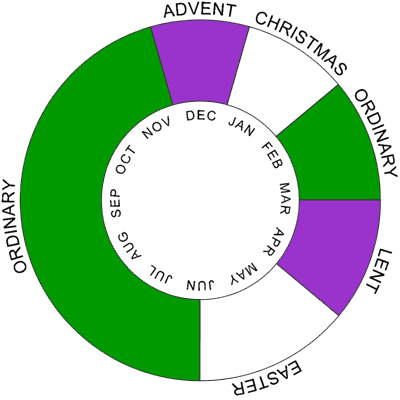
Closure
Thus, we hope this text has supplied invaluable insights into The Liturgical Yr: A Journey By Time with the Catholic Church. We hope you discover this text informative and helpful. See you in our subsequent article!